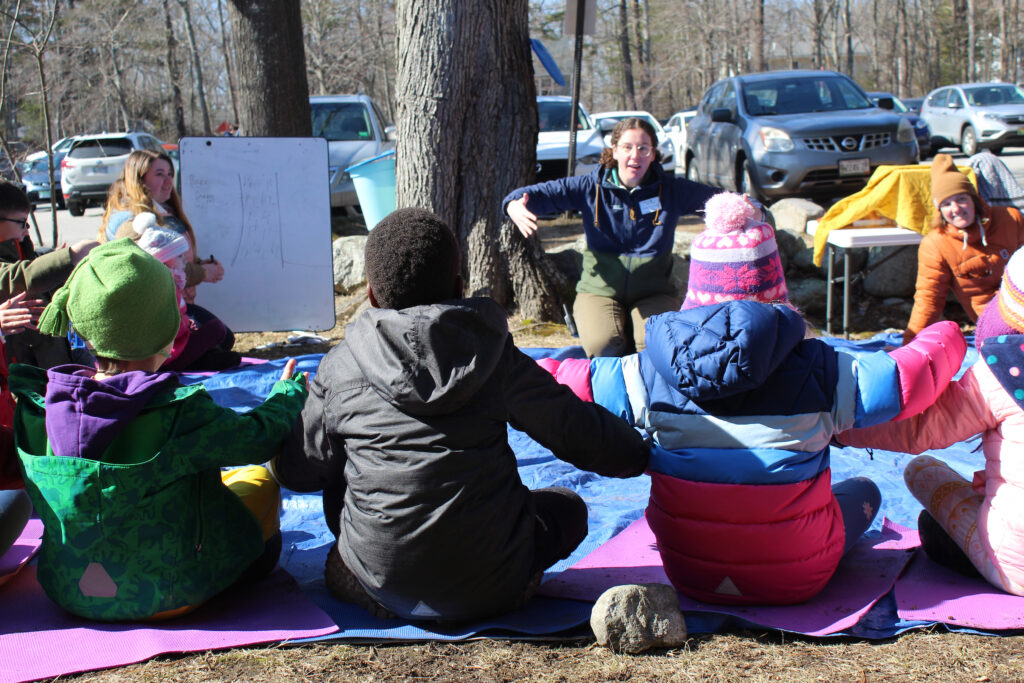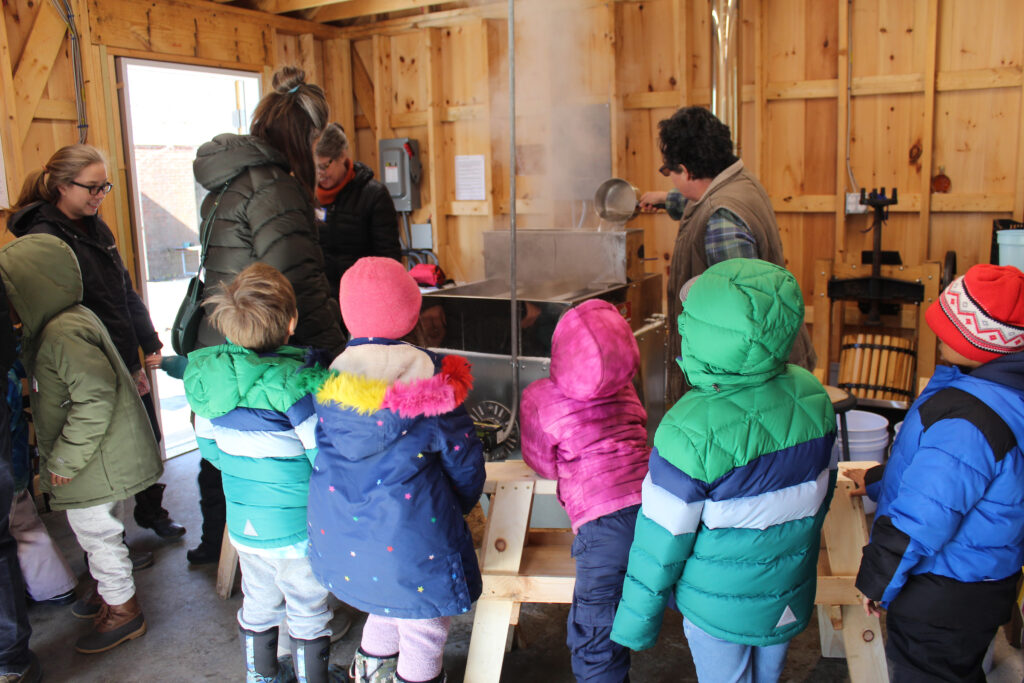
Maple sugaring takes patience—a lesson kindergarten students in Portland Public Schools now know firsthand. Students across the district spent late winter learning about maple trees and maple sugaring, studying maple trees on their school grounds, and in many cases, tapping those trees, as a part of a Wabanaki Studies unit for kindergarten called Maple Thanksgiving. Last week, those 500 kindergarteners visited the campus of the Portland Arts and Technology High School (PATHS) for a culminating fieldwork experience.
The week kicked off with Ocean Avenue Elementary School, where each classroom disembarked the school bus with a bucket of maple sap in tow, and students were eager to share what they had learned and observed. At the “Maple Discovery” rotation led by Maine Audubon educators, Early Childhood Program Manager Molly Woodring began by asking them about “their” maple trees:
“Are their branches opposite or alternate?”
“Opposite!”
“What words would you use to describe the bark?”
“Shaggy!”
“How big is the maple tree at your school?”
“Bigger than a hug!”
Sitting beneath a maple tree, she and other Maine Audubon educators went on to play a leaf identification game and use taxidermy to teach the students about the birds and wildlife that depend on maple trees for food and shelter, including Yellow-bellied Sapsuckers and Ruby-throated Hummingbirds that drink sap from holes created by the sapsuckers.
According to Portland Public Schools, “Students have learned about the Indigenous origins of maple sugaring and learned how to identify maple trees, as well as learning about the habitat they provide for animals. This unit aims to introduce students to the Indigenous values of gratitude and reciprocity, which are deeply embedded within a Wabanaki worldview. The visit is part of a larger initiative to integrate Wabanaki Studies into the district’s social studies curriculum, which is required by state law LD291. It also is part of a district-wide effort to ensure all students have fieldwork opportunities as part of their learning.”
During the Maple Thanksgiving fieldwork, students participated in four activity rotations. Along with the Maine Audubon station, Katie West, outdoor experiential learning coordinator for Portland Public School District, led students through a tactile experience making maple leaf ornaments with salt dough, and Brooke Teller, STEM Coordinator for Portland Public Schools, led a storytime station, reading Almost Time by Gary Schmidt and Elizabeth Stickney to the students.
But the sweetest part of the visit was surely the tour of the student-built PATHS Sugar House. High school students at PATHS collect sap on the campus and boil it down to create maple syrup, which is then used in the school’s culinary program. The kindergarteners watched a demonstration at the Sugar House and each got an ice cream cone with maple syrup poured on top.
“We get to have ice cream before lunch?” one student asked. “This is lunch!” responded another. The ice cream was a treat gone in an instant, but students’ relationship with and gratitude toward the maple trees seemed destined to stay with them for much longer.

